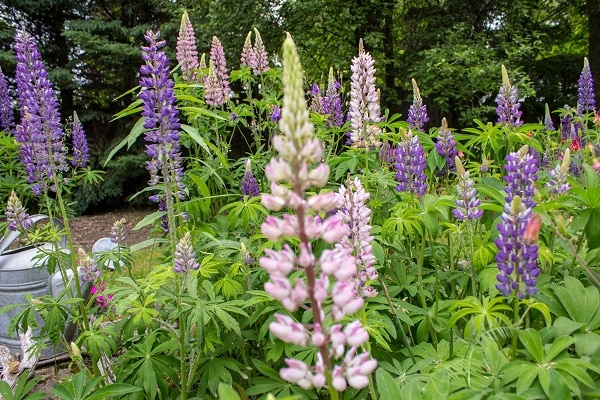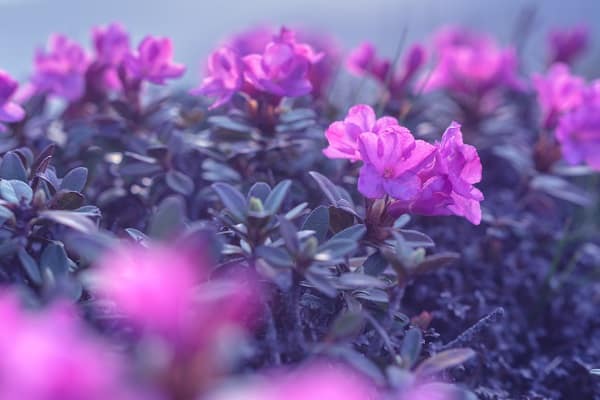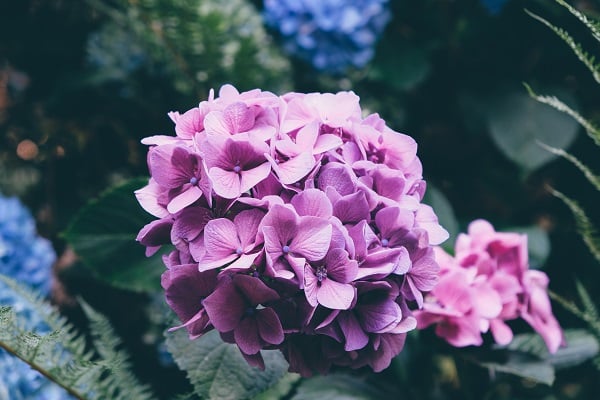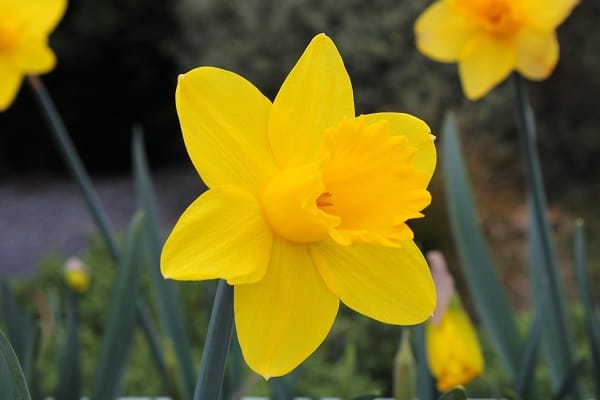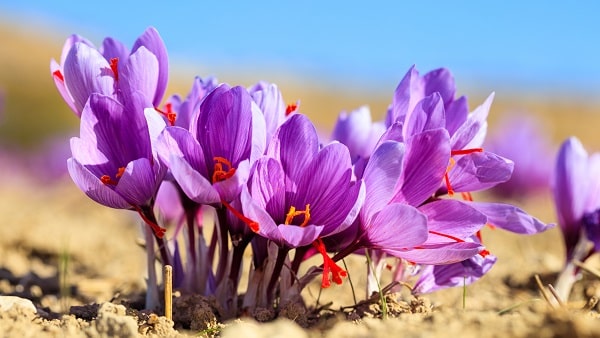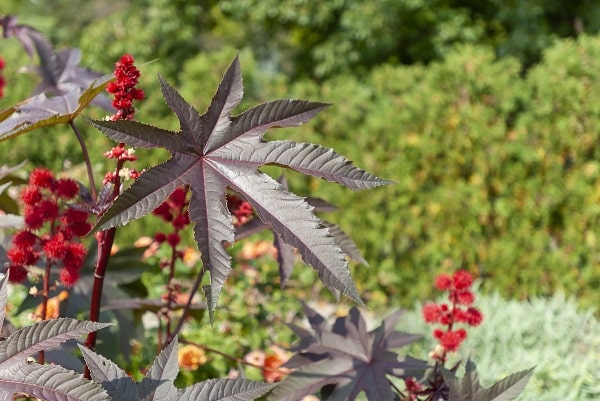Gardening, a pursuit cherished for beauty and tranquility, often hides dangers beneath its colorful blooms. Among these are toxic flowers, deceptively alluring yet potentially harmful to humans and pets. This article delves into the dangerous world of common garden flowers, unmasking their hidden toxicities. The aim is to equip garden enthusiasts with the knowledge to appreciate the beauty of their gardens and ensure safety. From the Oleander’s lethal allure to the deceptive danger of the Lily of the Valley, this exploration is a critical guide for every gardener.
Contents
- 1 Oleander: A Beautiful Yet Deadly Bloom
- 2 Foxglove: The Heartbeat-Altering Plant
- 3 Lily of the Valley: A Deceptive Danger
- 4 Rhododendron: The Bewitching Hazard
- 5 Hydrangea: A Popular Yet Potent Plant
- 6 Daffodil: The Hidden Perils in Beauty
- 7 Autumn Crocus: A Seasonal Threat
- 8 Castor Bean: The Deadly Ornamental
- 9 The Bottom Line
Oleander: A Beautiful Yet Deadly Bloom
The Oleander, with its vibrant flowers and lush foliage, is common in many gardens. However, beneath its beauty lies a deadly poison. Every part of the Oleander plant is toxic, containing substances that can cause severe heart issues, digestive upset, and, in extreme cases, death. The danger it poses to curious children and pets is particularly alarming. Despite its toxicity, Oleanders are popular due to their drought resistance and ornamental value.
Sadly, Oleander poisoning is not uncommon. Cases range from mild irritation to fatal incidents, often stemming from its mistaken identity as a harmless plant. Gardeners must exercise caution, ensuring that Oleanders are planted away from children’s play areas and that any clippings or fallen leaves are promptly removed to prevent accidental ingestion.
Foxglove: The Heartbeat-Altering Plant
Foxglove, known for its towering spikes of bell-shaped flowers, is a staple in many gardens. Yet, this stately plant harbors digitalis, a compound that can dramatically affect the heart. Ingestion of even a small amount can cause cardiac arrhythmias, nausea, and dizziness. The toxic nature of Foxglove is well-documented, yet its therapeutic use in controlled doses for heart conditions adds a layer of complexity to its perception.
The dangers of Foxglove are especially pertinent for households with children and pets. The plant’s attractive flowers can easily lure the unsuspecting, leading to accidental ingestion. Gardeners are advised to handle Foxglove with gloves and to educate their families about its potential hazards. Awareness and careful handling can prevent many of the accidents associated with this otherwise beautiful plant.
Lily of the Valley: A Deceptive Danger
The Lily of the Valley symbolizes purity and grace with its delicate white bells and sweet fragrance. However, its entire plant, including the bright red berries, contains cardiac glycosides, which are extremely toxic. Ingestion can lead to abdominal pain, vomiting, and, in severe cases, life-threatening heart irregularities. The plant’s appeal often masks its dangerous nature, leading to accidental poisonings.
Children are particularly at risk due to the Lily of the Valley’s attractive appearance and small size. The plant’s toxicity has led to numerous hospitalizations, underscoring the need for caution in its cultivation. Gardeners who choose to grow Lily of the Valley should ensure it is placed in areas less accessible to children and pets and remain vigilant about its potential dangers.
Rhododendron: The Bewitching Hazard
Rhododendrons, with their spectacular blooms, are a favorite among gardeners. However, these plants contain a toxin known as grayanotoxin, which can cause vomiting, diarrhea, and, in severe cases, cardiovascular collapse. The danger is not limited to the consumption of the plant; even honey derived from Rhododendron nectar can be hazardous.
Despite their toxicity, Rhododendrons remain popular due to their striking appearance and variety. Gardeners are encouraged to plant them in areas away from children and pets and to handle them carefully, especially when pruning or disposing of plant debris. Awareness of the symptoms of Rhododendron poisoning can facilitate prompt medical intervention, potentially saving lives.
Hydrangea: A Popular Yet Potent Plant
Hydrangeas, with their large, colorful blossoms, are common in gardens and bouquets. Yet, these beautiful flowers contain cyanogenic glycosides, which can release cyanide when chewed. Ingesting parts of the plant, particularly the buds and leaves, can lead to symptoms like stomach upset, vomiting, and, in severe cases, convulsions. The danger posed by Hydrangeas is often overshadowed by their ornamental appeal, leading to underestimation of their toxic potential.
Awareness and preventive measures are key when dealing with Hydrangeas. Gardeners should ensure that these plants are out of reach of children and pets. When handling or pruning Hydrangeas, it’s advisable to wear gloves and dispose of the trimmings safely to prevent accidental ingestion by wildlife or pets.
Daffodil: The Hidden Perils in Beauty
Daffodils, a herald of spring with their bright yellow blooms, hide a dangerous secret. The bulbs, often mistaken for onions, contain toxic alkaloids that can cause severe gastrointestinal distress, convulsions, and even heart problems. The plant’s charming appearance belies the danger it poses, particularly to pets and young children whom its bright flowers or bulbs may tempt.
Gardeners who grow Daffodils should take caution to plant them in areas not easily accessed by pets or children. It’s also important to store bulbs safely and label them clearly to prevent accidental ingestion. Understanding the symptoms of Daffodil poisoning can aid in a quick and effective response should an incident occur.
Autumn Crocus: A Seasonal Threat
The Autumn Crocus is a beautiful but deceptive plant with its striking purple flowers. It contains colchicine, a powerful compound that can cause severe gastrointestinal distress, kidney failure, and respiratory difficulties if ingested. The toxicity of the Autumn Crocus is particularly dangerous because symptoms can take hours or even days to manifest, often leading to delayed treatment.
Gardeners should exercise extreme caution with Autumn Crocus, especially if they have children or pets. Planting it in a fenced or elevated area can reduce the risk of accidental ingestion. Educating family members about the dangers of this plant is crucial to prevent curious exploration that could lead to poisoning.
Castor Bean: The Deadly Ornamental
The Castor Bean plant is an attractive ornamental plant with its distinctive foliage and seed pods. However, it contains ricin, one of the most toxic substances known. Ingestion of the seeds, even in small quantities, can be fatal. The plant’s allure often masks its potential for harm, making it a dangerous addition to unaware gardens.
Gardeners should think twice before planting Castor Beans, especially in gardens accessible to children and pets. If already growing, it’s advisable to remove the seed pods before they mature and to educate those around them about the dangers of the plant. Awareness and caution are key to ensuring safety around this toxic plant.
The Bottom Line
Gardening, a pursuit of beauty and tranquility, comes with risks, notably from toxic plants. This article has highlighted nine such plants, each with unique beauty and hidden dangers. Awareness and education are paramount in ensuring a safe gardening experience. While these plants can enhance the aesthetic of any garden, it’s crucial to balance their beauty with safety considerations. Gardeners are encouraged to research, take preventive measures, and educate their families about the potential hazards. By doing so, they can enjoy the benefits of gardening while ensuring the well-being of their loved ones and pets. Ultimately, a well-informed gardener is a successful one and a responsible steward of nature’s bounty.

